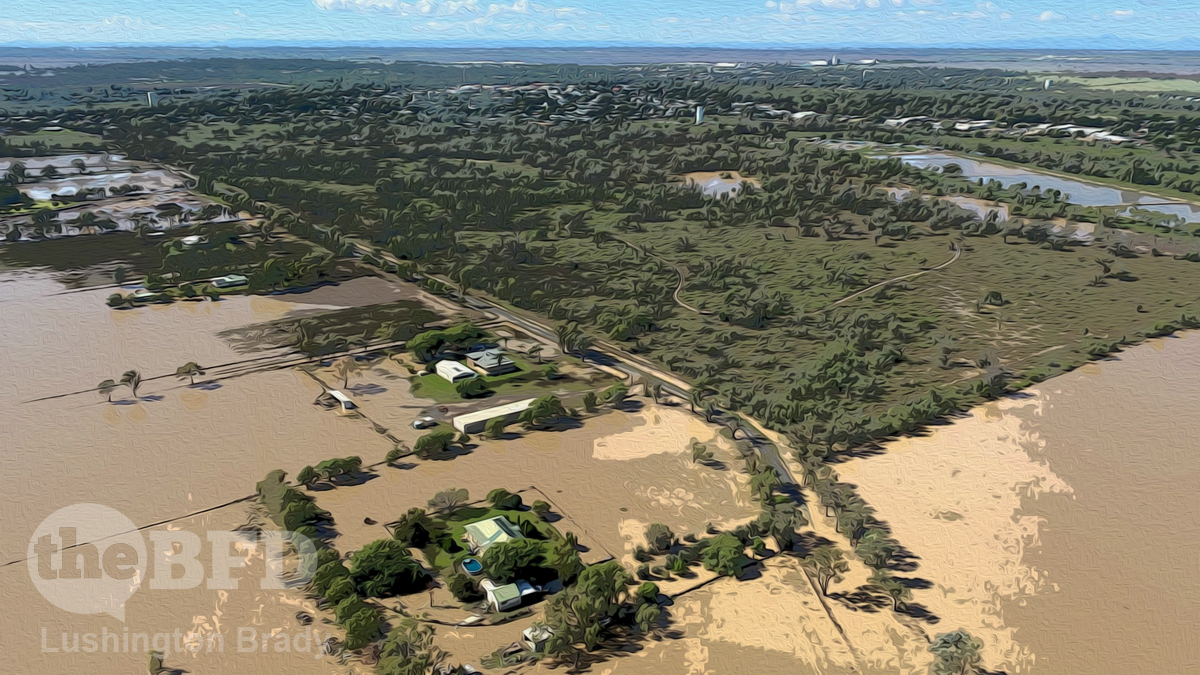Contrary to mythology, the quintessential Australian isn’t a rugged Outback type laconically shrugging off adversity with a “She’ll be right”. It’s an outraged suburbanite, shrieking that “The gummint should do somethin’!”
Australia has long been one of the most urbanised countries in the world. Even by the 19th century, the vast majority of Australians have been concentrated in “her five teeming sores”, the coastal capitals.
But those cities are getting bigger and bigger, largely due to decades of continued record-high immigration. And as those cities grow into countryside-devouring monsters, urbanites are a bit shocked to discover that, well, the bush burns, and rivers flood.
Flood waters have inundated Judy White‘s home in north-west Sydney three times in four months.
The Nepean River, which peaked at 16.61 metres on Sunday, rose past the top of her front door in Londonderry on Sunday.
“I’ve had this place for 12 months … I didn’t even make it to nine months. People don’t understand unless they’ve been through it,” she said.
Of course being flooded out is devastating, as is being burnt out. Of course we sympathise with someone whose been hit with such a calamity.
At the same time, we have to ask: what did you expect? The Hawkesbury-Nepean catchment is, as floodplains will do, notorious for flooding — repeatedly and often. It’s NSW’s most flood-prone area. In 1867, the town of Windsor, just down the road from Londonderry, was almost entirely submerged. The country for miles around was described as a “vast inland sea”.
Should people then be expected to deal with the choices they knowingly made?
Or should the gummint do somethin’?
Climate expert James Pittock, a professor in environment and society at the Australian National University’s Fenner School, said Mr Diemert shouldn’t be looking for a private buyer.
“The government should buy these homes back,” he said.
As for raising the Warragamba Dam wall, don’t you dare even think about it.
But, Professor Pittock warned converting the drinking-water dam to a flood-prevention tool could “instil a false sense of security” in the area.
The plan has also been criticised by environmental groups, who argue the Blue Mountains could lose its world heritage listing, and some First Nations people, who warn culturally significant sites would be destroyed.
Naturally, the ABC has to try and hitch the floods to its climate change obsession.
Professor Pittock said more regular weather extremes sparked by climate change would likely leave the area vulnerable.
ABC Australia
What “more regular weather extremes”?
To try and support its agenda, the ABC provides a handy little graph of flood levels in the area since 1900. It shows a clear trend of worsening floods.

Hang on – why since 1900? The ABC’s own link to its source lists data going back to 1799.
Look what happens when you graph all the data, rather than cherry-picking just the data since 1900.

As the data shows, flooding in the region has declined since records began.
The data also shows that the region floods a lot, often multiple times in a year. Four times in 1867, five times in 1950.
Doesn’t sound like a smart place to build a house.

